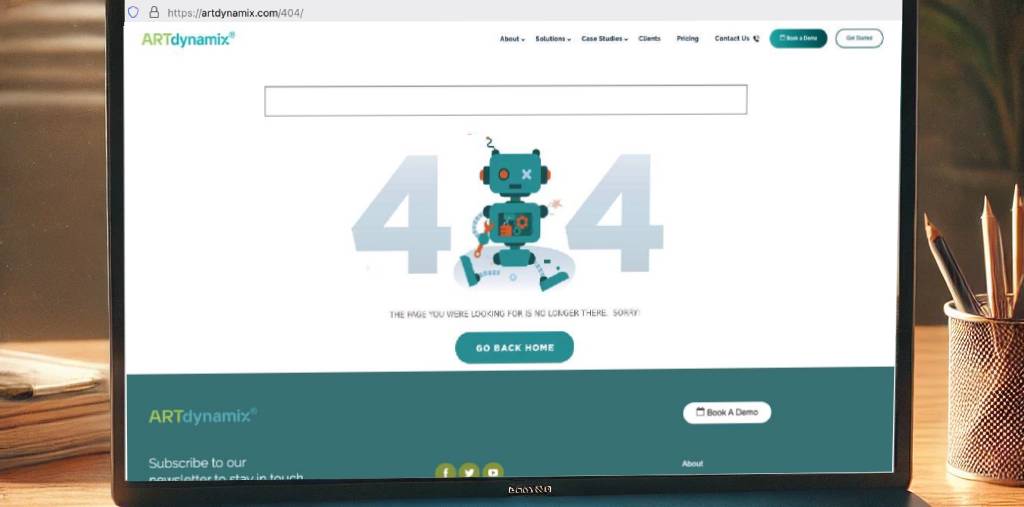Strategies for better Search Rankings in the AI Era
The SEO environment has radically changed. What was successful in 2023 is already outdated, and the evolution continues daily into 2025. We keep you up to date with what with real world solutions to Search Every Optimization we have implemented for our clients. Frankly, those who keep up with the change are doing very well, and some who are not are experiencing difficulties.
Unfortunately, many think that a redesign of the website will solve their problems which is almost never true. On the other hand, the ability to shift content strategy based on the changes in AI will separate successful businesses from those that are left behind at the bottom of search results. The emergence of AI-based search, the appearance of new types of content, and the development of user expectations are among the most significant trends in SEO shaping 2025 efforts.
Search engines are currently utilizing advanced AI-based systems that comprehend the context, intent, and quality of content at unprecedented levels. Zero-click searches now comprise more than 60 percent of searches, AI summaries occupy close to 20 percent of results, and answer engines such as ChatGPT and Perplexity are capturing a significant portion of the traditional search market share. YouTube, the second largest in the world, is also increasing its role in SEO strategies and provides exceptional opportunities in terms of organic search traffic and visibility.
The companies that are doing well in the new environment are not simply adjusting; they are redefining their whole content and search visibility strategy. Video content is also becoming a key component in improving visibility and interaction on both Google and YouTube, and has become a valuable tool in modern SEO.
The New Era of SEO
Search Everywhere Optimization is the new paradigm for search. With the increasing integration of artificial intelligence and machine learning into search engines, user search behavior has undergone a radical shift, and this is equally true of the search engine’s understanding of search queries. Modern digital marketers need to reassess their SEO practices to align with these innovations. It is a success in this new age because it emphasizes high-quality, user-centric content that fulfills search intent and utilizes the latest AI-driven tools. When focusing on these factors, companies can improve online presence, and organic traffic, by maintain a higher placement on search result ranking pages. The future of SEO is all about how the search engines work with information and how you need to adjust your strategy so that you match the evolving demands of the search users and the search engine.
Setting SEO Goals and Objectives
An effective SEO plan is based on practical, achievable objectives. The first step in developing effective strategies is to clarify what you would like to accomplish with your SEO activities, whether it be increasing organic traffic, achieving a higher ranking with search engines, or generating higher-qualified leads and conversions. Align your SEO goals with your overall business objectives to ensure that all optimization efforts work in your favor. Be specific and measurable: monitor key metrics such as search engine rankings, organic traffic, click-through rates, and conversion rates. Establishing data-driven goals provides you with a roadmap for your SEO strategy. It allows you to quantify the impact of your work, making it more likely to make adjustments and optimize it for further success.
1. AI-Powered Search Results Are Reshaping Visibility
The AI Overviews of Google are now shown on almost 20 percent of organic search traffic, as compared to only 7 percent in June 2024. In the information-heavy sectors such as technology and business, more than one-third of search results currently include AI-generated summaries. Answers generated by AI are altering the search results page (SERP) in response to user queries, delivering direct answers that affect user behavior and change the way users engage with search outcomes.
The change poses challenges and opportunities. As much as AI summaries can decrease direct clicks to websites, they also provide websites that are not in the top 10 results with a new citation opportunity.
Actionable Strategy:
-
-
- Structure content in clear Q&A formats with concise 40-60-word answers
- Use bullet points, numbered lists, and tables for easy parsing by AI.
- Include authoritative statistics and data that AI systems can cite.
- Focus on answering specific questions rather than broad topics.
- Organize information to help search engines understand your content and generate accurate AI answers.
-
2. Answer Engine Optimization (AEO) Is The New SEO
Traditional search engines are evolving into answer engines. ChatGPT Search was introduced at the end of 2024 and is estimated to grow to 1 percent of the search market in 2025. Perplexity has increased to over 15 million users, and referral traffic has grown by 71 percent annually.
This represents a radical shift from connecting users to websites to connecting them with direct answers and citations.
As generative AI products generate more content, it is essential to evaluate the quality and reliability of this content to prioritize content ranking in answer engines.
Some essential steps include developing and maintaining FAQ sections for every significant content piece. You should also write in a way that your content addresses conversational queries. Next, you must pay close attention to implementing proper schema markup to help AI systems understand your content. And, finally, you must monitor performance across multiple answer tools, and not just Google.
3. Community and Forum Content Domination
Following the core refresh in August 2024, Reddit’s visibility improved to become the third most visible search result, next to Google, with a fourfold increase in Google traffic. Users are also actively incorporating Reddit into their searches to obtain more authentic and experience-based responses.
This tendency represents the desire of users to consume authentic, firsthand information, as opposed to AI-generated or strictly promotional texts.
Strategic Approach:
-
-
- Identify relevant communities where your target audience actively participates.
- Engage authentically in industry-specific forums.
- Create content that answers fundamental questions being asked in these communities.
- Develop relationships with community moderators and active participants within the community.
-
4. Sales-Focused SEO Content Strategy
The best SEO practices in the coming months will incorporate sales goals into content optimization, rather than focusing solely on the informational content in the top-of-funnel section. Winning strategies will be geared towards middle- and bottom-funnel keywords that drive conversions. Competitive analysis is crucial for identifying and optimizing target keywords, ensuring your content is ranked in high-traffic, commercially relevant search results.
Studies have shown that Google tends to give preference to websites with a higher percentage of branded content, implying that there is no cost associated with incorporating product promotion into SEO content.
The specific page should be audience- and goal-conversion focused, and on-page items should be customized to optimize visibility and interaction.
Content Integration Methods:
-
-
- Weave product demonstrations and case studies into informational articles.
- Target commercial intent keywords alongside informational ones
- Ensure the target keyword is included in on-page elements, such as page titles, header tags, and meta descriptions. Although some elements, like meta descriptions, are not direct ranking factors, they can improve click-through rates and user engagement.
- Create and optimize blog posts as part of a sales-focused SEO strategy to attract backlinks, drive organic traffic, and enhance online visibility.
- Include video demos and interactive elements within educational content to enhance learning experiences.
- Develop content that serves both search rankings and sales enablement.
-
5. Firsthand Experience as a Ranking Differentiator
The first E in the E-E-A-T guidelines at Google prioritizes experience. As the volume of AI-generated output increases, covering search results, unique insights, and firsthand experiences are now important ranking factors.
This was confirmed by the Google API leak, which exposed an artificial factor of OriginalContentScore. This factor is actually a ranking factor that proves search engines are actively scoring content based on novelty and authenticity.
Experience-Driven Content Creation:
-
-
- Conduct original research and surveys within your industry.
- Interview subject matter experts and include unique insights.
- Share specific case studies and real-world applications.
- Document proprietary processes and methodologies
- Include personal anecdotes and lessons learned from actual implementation.
-
6. User-Centric Intent Optimization Over Keywords
The percentage of Google AI Overviews that include a perfect match to the key phrase is only 5.4%, which suggests that search engines no longer focus on a specific phrase, but instead on the user’s intention.
The Navboost platform at Google analyzes various types of clicks, including good clicks, longest-lasting clicks, and bad clicks. That is, the quality of engagement is considered more important than mere traffic data.
Intent-First Optimization:
-
-
- Research the specific problems your audience faces at each stage of their journey. Effective keyword research is essential here—using keyword research tools like SEMrush or Ahrefs helps uncover search intent, relevant topics, and new SEO opportunities.
- Create content clusters that address related questions and concerns, and optimize for semantic relevance by using natural language and addressing related concepts to improve visibility in AI-driven search engines.
- Develop shorter, focused pieces that interlink rather than massive pillar pages.
- Focus on solving specific user problems rather than targeting keyword volumes.
- Analyze queries entered into the search bar to identify long-tail keyword opportunities and better understand user needs.
-
7. Zero-Click Search Strategy Development
As zero-click searches now account for 60% of all Google searches, effective SEO practices must consider the visibility that does not result in direct traffic to a website.
This change requires the creation of content strategies that will foster brand awareness and authority, even when users do not click through to your website. It should be noted that measuring traffic is not as important as engagement, conversions, and the quality of buyers and visitors, particularly as zero-clicks and AI-based SERPs become more prevalent.
Zero-Click Optimization Tactics:
-
-
- Optimize for featured snippets with clear, concise answers.
- Develop content specifically designed for knowledge panels.
- Create brand-focused content that builds recognition in search results.
- Track brand search volume and awareness metrics alongside traditional traffic metrics to gain a comprehensive understanding of your brand’s performance.
- Use local SEO optimization for location-based zero-click queries.
- Leverage zero-click features to increase organic traffic and brand visibility.
-
Examine the most popular results to understand what Google rewards without clicks, as it may be helpful to structure your content in accordance with what is highly ranked. It is essential to stay up-to-date with the changes in Google search that can impact zero-click visibility, ensuring your SEO strategy remains effective and enhanced.
Optimizing for Clarity and Context
Clarity and context are now more than ever before in the era of AI-driven search engines. To produce content that is notable on search engine results pages, emphasize the use of natural language that reflects the search and speech of users. It is essential not to emphasize stuffing keywords, but instead to focus on content that helps users, making it easy for search engines to understand the purpose and relevance of each web page. Divide your material and use clear header tags, interesting meta descriptions, and key internal links to help guide your visitors and search engines across your site. Beyond featured snippets optimization, which means the ability to give a brief and direct response to frequent search queries, can also increase your visibility and attract more organic traffic. It aims to produce content that not only ranks well but also provides real value to your target audience.
Building High-Quality Backlinks in 2025
Backlinks are still considered the cornerstone of any successful SEO strategy, yet the process of link building is evolving with the emergence of AI-powered search engines. In 2025, the quality of an earned backlink will not be a matter of volume, but rather the development of proper relationships with other websites and offering valuable, relevant content that will naturally lead to links. Consider becoming a guest blogger, creating detailed resources, and promoting user-generated content that others will find helpful to refer to. Utilize the power of modern AI tools to analyze your backlink profile, identify potential loopholes, and uncover new collaboration opportunities. A diverse and authoritative backlink profile can help increase the credibility of your website, improve your ranking with search engines, and drive organic traffic from a wide range of sources.
Technical Foundation: Core Web Vitals and Performance
Search engines continue to prioritize technical performance based on Core Web Vitals metrics. The next Interaction to Next Paint (INP) value will be added to Largest Contentful Paint (LCP) and Cumulative Layout Shift (CLS) as necessary ranking measures. Technical SEO is crucial for enhancing the site’s speed and overall performance, which directly impacts user experience and the webpage’s visibility on search engines.
Technical Optimization Priorities:
-
-
- Compress images using WebP and AVIF formats.
- Implement lazy loading for below-fold content.
- Minimize third-party scripts and unnecessary JavaScript.
- Ensure mobile-first design with touch-friendly navigation.
- Reserve space for dynamic content to prevent layout shifts
- Apply image optimization techniques, such as image compression, descriptive file naming, and adding alt text with targeted keywords, to enhance site speed and improve search rankings.
-
Using high-quality images with descriptive alt text and proper schema markup enhances the user experience, supports visual search optimization, and contributes to faster content loading. Technical improvements like these can have a significant impact on SERP rankings.
Structured Data and Schema Implementation
Structured data has become a choice and a requirement in contemporary SEO. Good schema markup enables rich results and allows AI to understand the context and relationships within content. The adoption and validation of structured data can be easily achieved, and by leveraging reliable SEO tools, the information will be accurate and have a significant impact on search results. Structured data also makes larger content marketing plans more productive, as it enhances the visibility and interaction of content across multiple media.
Priority Schema Types for 2025:
-
-
- Article schema with author information and publication dates
- Product schema with ratings, prices, and availability
- FAQ schema for question-and-answer content
- LocalBusiness schema for location-based businesses
- HowTo schema for instructional content
-
Staying Updated on Algorithm Changes
SEO is a constantly evolving world with hundreds of changes made to the search engines every year. It is imperative to keep up with these changes to maintain and increase your organic traffic. It should be a habit to follow industry news, attend webinars, and conferences to stay up to date with recent events. Track the performance of your website using AI-powered tools and rapidly detect the impact of any algorithmic changes. Of particular interest are trends in the field of SEO, including the emergence of AI-based search engines, the growing importance of core web vitals, and the role of user-generated content in search engine rankings. Being proactive and flexible will keep your SEO strategy contributing to organic traffic and showing results, regardless of how the search landscape changes.
Measuring Success in the New SEO Landscape
Traditional metrics, such as organic traffic and keyword rankings, while still important, don’t tell the complete story of SEO success in 2025.
Expanded Metrics Framework:
-
-
- Brand search volume and awareness tracking
- Featured snippet and AI Overview appearances
- Cross-platform visibility (YouTube, social media, answer engines)
- Content engagement depth and time-on-page metrics
- Conversion rate optimization from organic traffic
- Share of voice in your industry’s search landscape
-
Website owners play a crucial role in tracking and interpreting these metrics to ensure ongoing improvements in SEO. High-quality content directly contributes to improved engagement and better performance across these key SEO metrics.
Building Your Fall 2025 SEO Strategy
The most effective SEO techniques in 2025 will combine these factors into a unified solution that is user-focused, featuring multi-search and AI-search optimization. Even though new AI-based approaches are being developed, the operational principles of classical SEO, i.e., creating original content and an adequate site structure, will remain a pillar and must be integrated with the new methods.
Begin with a content audit of your existing E-E-A-T signals to identify opportunities to incorporate first-hand experience and professional observations. Producing content that directly relates to the user’s needs and search intent is key to supporting your overall search engine goals. Build content around user purpose, not keyword lists, and perform technical Optimization that serves both humans and AI.
Keep in mind that SEO in 2025 is not just about ranking in Google; it is about creating omnichannel content authority that benefits users across all the platforms they seek information.
The companies that succeed in the new environment will be those that consider SEO as a component of a wider content and brand approach, one that is concerned with actual value creation, rather than search engine optimization.
Dream Warrior Group, a Los Angeles-based web design and digital marketing Company, provides solutions for your online marketing needs. Our expertise includes Search Engine Optimization (SEO), Social Media Posts and marketing, and Google PPC campaigns. Call us now at 818.610.3316 or click here.





